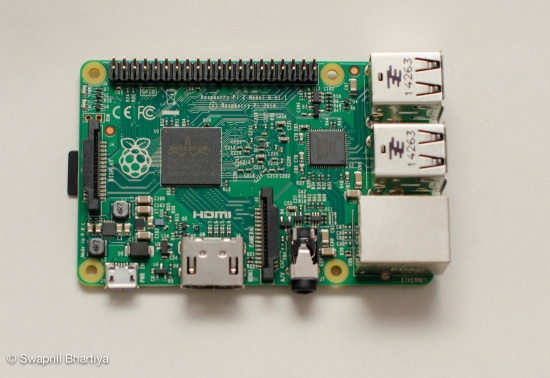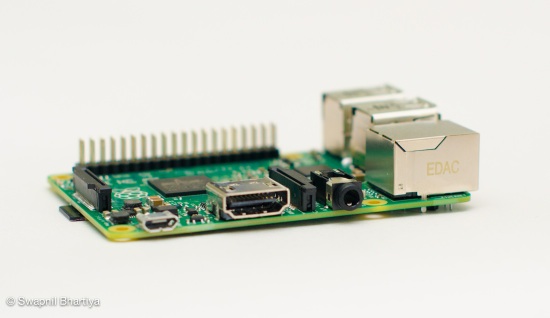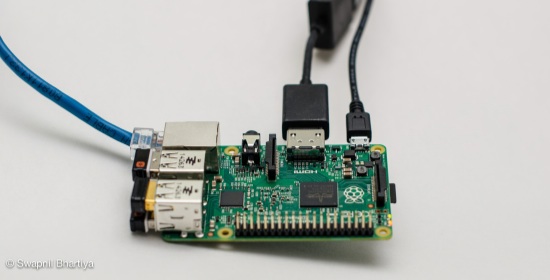
Raspberry Pi is nothing short of a revolution. This credit-card-sized, $35 computer has created an entire breed of makers and enthusiasts who are doing amazing things with this device. The device is developed by the Raspberry Pi Foundation which was established by the technical director and ASIC architect for Broadcom, Eben Upton in May 2009.
I talked to Upton during a past LinuxCon and he told me, “Raspberry Pi was an attempt by us at the University of Cambridge to solve a recruitment crisis that we were having in the middle part of the last decade. We had too few people applying to study computer science and we found that the range of skills that people had when they came in, and these were incredibly bright young people, was nothing like what people had in the mid 1990s.”
But the device has obviously blown all expectations and has gone beyond Cambridge, beyond the UK. It’s a global phenomenon now.
The device that was launched in 2012 has seen a few upgrades, but the Raspberry Pi 2 Model B – released in early February – is the most significant upgrade to date.
The Hardware
Some companies make your current device obsolete and its accessories incompatible within a year when the new device comes out – a new and disturbing trend. Raspberry Pi, on the contrary, is all about users, and it has always been. The second version of the model B brings a major hardware upgrade but it doesn’t break one’s current set-up.
So what’s new?
Raspberry Pi 2 comes with a quad core processor; you read it correctly: a quad core ARM processor. And the Pi Foundation claims that it’s six times faster than the previous model.
The heart of the Pi 2 is the Broadcom BCM2836 quad core Cortex A7 processor beating at 900MHz speed and comes with VideoCore IV GPU. It also has double the amount of RAM.
The faster processor and more cores mean a significant, a very significant, performance boost for applications which can take advantage of this upgraded hardware. (See how it compares to other ARM boards in Ben Martin’s Performance Testing the New $35 Raspberry Pi 2.)
Pi 2 comes with an HDMI port, 4 USB ports, an Ethernet port, MicroSD card slot for OS, microUSB port for power supply and 3.5mm audio out. Pi has its own eyes and face with a CSI camera port and a dSI display port. The 40pin extended GPIO lets your Pi to talk to other devices and people are using it to make amazing stuff.

Despite the hardware upgrade, the design of the board remains the same so users won’t have to buy a new case or worry about screw holes. The GPIO is fully compatible not only with the previous model but also with the model A.
Just swap your own Model B+ with Pi 2 and you are back in business. That said, not everything will work out of the box; you can’t pull the SD card from your current B+ and use it on RPi 2, because it will need a different kernel and firmware for the new processor.
That brings us to the operating systems that can run on Pi 2.
The Pi OS
The arrival of ARMv7 has brought news OSes to the device, including Ubuntu and Windows 10. Almost all major distributions are available for Pi including Arch Linux, Puppy Linux, openSUSE, Slackware, etc.
One of the best ways to try out different OSes on Pi is through NOOBs (new out of the box software), and if you are a new user, NOOBs is the way you should take. NOOBs comes with several OSes included: Raspbian, Pidora, OpenELEC, RaspBMC, RISC OS and Arch Linux. Once you boot into NOOBs you can choose the OS you want to install on the Pi.
I skipped NOOBs and installed Arch ARM and Raspbian on my Pi and had a great experience with both. It’s fairly easy to install any OS on Pi.
All the software you can get
Each distro comes with its own set of default applications pre-installed. Depending on the distro you choose to install on your Pi, your software experience will differ. Raspbian comes with some core applications such as Epiphany web browser, terminal, PCManFB file manager and some developmental tools. But you are not limited to these ‘few’ applications; there are over 35,000 packages for Raspbian Pi. Installing applications like LibreOffice, Chromium, VLC, etc. is just as easy as it is on a regular distro. Just one caveat: not all applications are available for ARM architecture.
The experience with resource intensive applications was not great – Chromiun would run but crash the moment another tab is opened. Lightweight browsers like Epiphany or Midori may work fine. Epiphany played YouTube videos well. So while you can get almost every application for your Pi, if I were you I would choose the lightweight ones to be more considerate to the modest hardware.
Ease of use?
It’s fairly easy to use a Pi. I bought a 32GB MicroSD card, a bluetooth dongle for connecting my mouse and keyboard, and another dongle to connect to the WiFi. Plug in the microUSB power supply and connect the Pi to your monitor with HDMI and you are all set. I have multiple OSes on different microSD cards and I swap to try out different OSes (mostly playing with Arch Linux ARM and Raspbian). You can easily use it headless (without monitor or keyboard), by sshing into the Pi from another system on the local network.

Doing stuff
Raspberry Pi may have been intended for ‘students’, however, it has found a wider audience in adults. People are doing amazing and exciting things with it. Before I bought Pi I wondered what would I do with it. I am a writer, a journalist and I play with gadgets for home automation; but that’s the most I can do between my extremely tight work schedule and my family.
When I received the PiPi, I realized its potential. I heard a saying (don’t know the source): why use a sword when a needle would do fine. It was not about what I can do with Pi. After looking at this credit card sized device I realize what all I ‘can’t’ do with my 5 pound 21x17x9-inch box. I can use this ‘smaller-than-my-wallet’ device, which packs the power of a moderate PC and can run a full-fledged Linux OS, anywhere I want.
I am certainly going to replace my $800 file server with this $60 device (if you add the cost of Pi, power supply and SD card). I run a central file server so that I can work on my documents from different devices without worrying about copying and moving the files on those devices. The second usage is a media server, which streams movies, music and TV shows to my Amazon Prime TV Stick, Chromecast and other such devices.
I know this is ‘under-usage’ of this incredible device, but the point is ‘anyone’ can use this device to do ‘things’ they do, or want to do with it. It’s not a ‘do-this-only’ device.
More exciting ideas for the Pi
* Create a Minecraft machine: You can easily create the Minecraft virtual world with the Pi.
* Building your own Game Boy or Arcade System: People are re-creating retro gaming experience with Pi.
* Create your own cloud server: You can very easily install Seafile server on a Pi.
* Make a Pi phone: Dave Hunt has created his own smartphone with Raspberry Pi.
* Weather station: Ioannis Kedros of EmbeddedDay.com created a weather station with the Pi.
* Build your own Terminator: It’s not easy to build a robot but Pi suddenly put intelligence in a tin box. The inter-web is full of exciting stories about people building their own robots.
So tell us, what are you doing with your Pi?


